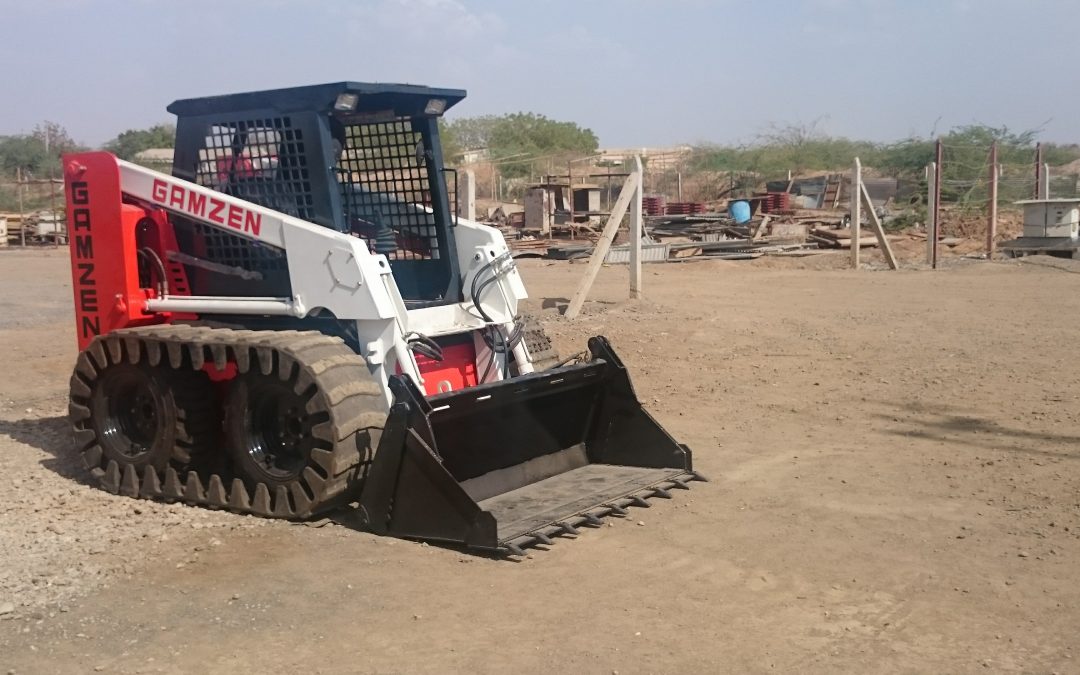Skid steer loaders have revolutionized the construction and heavy machinery industry over the years. These versatile machines have become an integral part of various industries, offering exceptional maneuverability and efficiency. In this article, I will delve into the evolution of skid steer loaders, their advantages, key considerations when choosing one, and the future of skid steer technology.
Introduction to Skid Steer Loaders
Skid steer loaders are compact, four-wheel-drive machines that have the ability to maneuver in tight spaces and perform a wide range of tasks. They are equipped with lift arms that can accommodate various attachments, making them incredibly versatile. Originally introduced by Bobcat in 1960, skid steer loaders have come a long way since their inception.
Development of Skid Steer Technology
Skid steer technology has undergone significant advancements over the years to meet the growing demands of different industries. The focus has been on improving performance, reliability, and ease of use. Manufacturers like Bobcat and John Deere have played a vital role in pushing the boundaries of skid steer technology.
One of the key developments in skid steer technology is the enhancement of hydraulic systems. Hydraulic controls have become more precise and responsive, allowing operators to have better control over the machine.
Additionally, advancements in engine technology have led to improved power and fuel efficiency.
Impact on Various Industries
Skid steer loaders have had a profound impact on numerous industries, including construction, landscaping, agriculture, forestry, and snow removal. Their compact size and maneuverability make them ideal for working in tight spaces and navigating around obstacles. Skid steer loaders excel in tasks such as excavating, lifting, grading, and material handling.
In the construction industry, skid steer loaders have become indispensable. They can easily navigate through construction sites, efficiently moving materials and completing tasks that larger machines may struggle with. Landscapers appreciate their versatility in tasks such as grading, trenching, and moving heavy objects.
In the agricultural sector, skid steer loaders are used for tasks such as cleaning animal pens, handling hay, and moving feed. Their agility allows them to access hard-to-reach areas, making them valuable assets on farms.
Forestry operations also benefit from skid steer loaders, as they can navigate through dense forests and assist in tree removal, mulching, and brush clearing.
Additionally, skid steer loaders equipped with snow removal attachments are widely used for clearing roads, sidewalks, and parking lots during winter months.
Advantages of Skid Steer Loaders
Skid steer loaders offer several advantages that contribute to their widespread use across industries.
Versatility in Applications
One of the most significant advantages of skid steer loaders is their versatility. With a vast array of attachments available, skid steers can easily adapt to different tasks. Attachments include buckets, pallet forks, grapples, augers, brush cutters, and many more. This versatility allows operators to accomplish a wide range of tasks without the need for multiple machines.
Enhanced Maneuverability
The compact size of skid steer loaders enables them to maneuver in confined spaces with ease. Their zero-radius turning capability and skid steering enable operators to navigate tight turns and operate in areas where larger machines cannot reach. This advantage is particularly valuable in urban construction sites and residential areas.
Productivity and Efficiency Gains
Skid steer loaders offer remarkable productivity and efficiency gains. Their ability to quickly change attachments means less downtime and increased productivity on the job site. Operators can seamlessly switch from digging trenches to moving materials, eliminating the need for additional machines. This versatility translates to significant time and cost savings.
Key Considerations When Choosing a Skid Steer Loader
When selecting a skid steer loader, it is crucial to consider various factors to ensure the right machine for your specific needs.
Understanding Different Model Types
Skid steer loaders come in a range of models, each designed to meet specific requirements. Understanding the differences in model types is essential. Factors to consider include size, horsepower, operating capacity, and weight. Assessing the job requirements and available space will help determine the appropriate model for the task at hand.
Matching Specifications to Specific Tasks
It is crucial to match the specifications of a skid steer loader to the specific tasks it will be performing. Consider the required lifting capacity, hydraulic flow, and compatibility with attachments. A skid steer loader with insufficient power or capacity may struggle to complete certain tasks efficiently.
Evaluating Attachment Options
Attachments play a significant role in the versatility of skid steer loaders. Evaluate the available attachment options and ensure they align with the requirements of your industry or job site. Common attachments include buckets, pallet forks, trenchers, and grapples. Selecting the appropriate attachments will maximize the machine’s capabilities and increase efficiency.
The Future of Skid Steer Technology
Skid steer technology continues to evolve, driven by advancements in engineering and the need for more sustainable solutions. Here are some developments to look out for in the future.
Innovations in Electric Compact Loaders
As the world shifts towards more sustainable practices, manufacturers are exploring electric-powered skid steer loaders. These machines offer zero emissions and lower noise levels, making them ideal for indoor operations and environmentally sensitive areas. Electric compact loaders have the potential to reduce the carbon footprint associated with traditional diesel-powered machines.
Potential Advancements in Performance and Capabilities
With ongoing technological advancements, skid steer loaders may see improvements in performance, capabilities, and operator comfort. Enhanced controls, improved lifting capacities, and greater stability are areas that manufacturers are likely to focus on. Advanced safety features and ergonomic design considerations can further enhance operator productivity and reduce fatigue.
Impact on Industry Standards and Practices
As skid steer technology evolves, it will impact industry standards and practices. The versatility and efficiency of skid steer loaders will continue to drive their adoption across various sectors. Operators and industry professionals will need to stay updated with the latest technologies and best practices to leverage the full potential of these machines.
FAQs
What are the primary applications of skid steer technology?
Skid steer technology finds applications in various industries, including construction, landscaping, agriculture, forestry, and snow removal. They are used for tasks such as excavating, lifting, grading, material handling, and snow clearing.
What are the key advantages of using skid steer technology in various industries?
Skid steer loaders offer versatility in applications, enhanced maneuverability in confined spaces, and productivity gains through quick attachment changes. They can perform a wide range of tasks with the right attachments, resulting in time and cost savings.
How do skid steer loaders compare to other types of heavy machinery in terms of maneuverability and versatility?
Skid steer loaders excel in maneuverability and versatility compared to other types of heavy machinery. Their compact size and zero-radius turning capability allow them to navigate tight spaces and handle a variety of tasks that larger machines cannot.
Additionally, their ability to quickly change attachments enhances their versatility.
What are the top factors to consider when selecting a skid steer loader for specific industry needs?
When choosing a skid steer loader, it is essential to consider factors such as model type, specifications, attachment options, and the specific tasks it will be performing. Understanding the requirements of the job site and evaluating the machine’s capabilities will help ensure the right skid steer loader is selected.
In conclusion, skid steer loaders have revolutionized the construction and heavy machinery industry. Their evolution over the years has resulted in enhanced performance, increased versatility, and improved efficiency. With ongoing advancements in technology, the future of skid steer loaders looks promising, with the potential for electric-powered machines and further advancements in performance and capabilities. Understanding the advantages of skid steer technology and considering key factors when choosing a machine are crucial for maximizing productivity and achieving success in various industries.

